

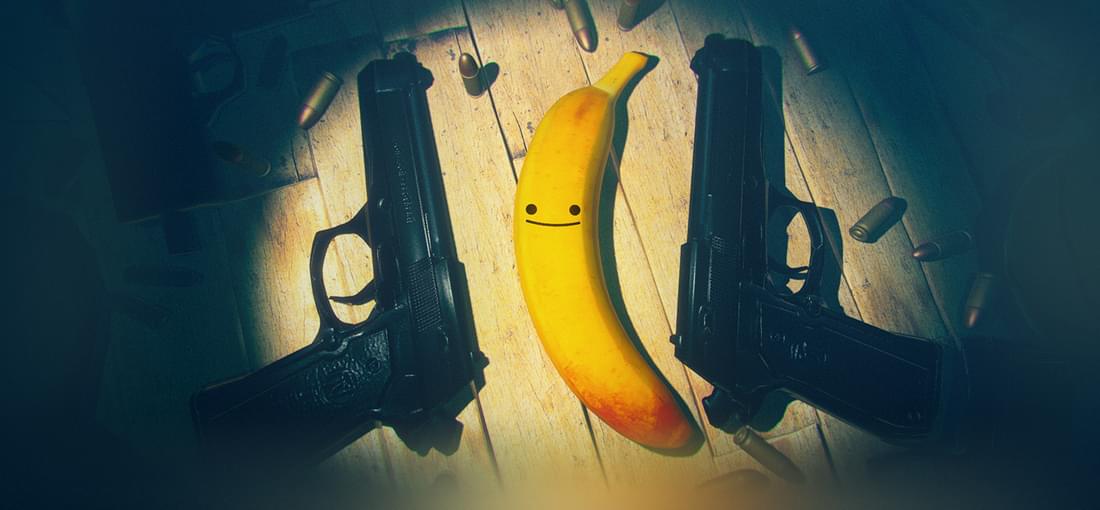
My Friend Pedro has a solid little reputation, and a well-deserved one at that. Largely made by a single person based on his own flash game, it’s a fun romp that definitely has its place in Devolver’s catalog. MFP’s story is fun, and its art direction colorful. Still, this is a game you’ll primarily play for its insane slow-mo-infused gunplay, reminiscent of Max Payne and F.E.A.R.. This is a brutal bullet ballet where you’ll stylishly slaughter hundreds of enemies with dual-wielded guns and over-the-top acrobatics, using elements of the scenery as lethal weapons when given the opportunity. While getting decent end-level ratings takes some effort and the physics can be slightly wonky, pulling out badass stunts is not that hard and extremely satisfying; plus, thanks to unlimited lives, well-placed respawn points and generous slow-mo meter, not even the most challenging moments are frustrating to play through. The game is every bit as dynamic and insane as the trailers would have you believe, and for the most part, it manages to renew itself well; the campaign regularly adds new guns and mechanics, and discards them when they get old. The real issue with MFP is its last third, which is often criticized... for good reasons. At this point, MFP seems to be out of ideas to renew its combat system and amp up its challenge, so enemies become rarer while the levels become more puzzle-focused. Those levels are still well-designed, but the game loses quite a lot of its appeal at this point, making the average player wish for more hostile encounters. Paradoxically, getting a good rating on the last levels is actually easy due to them having so few enemies! I may have given MFP a 5-stars rating if it wasn’t for its final chapters being underwhelming. Otherwise, it’s still a ton of fun. It is very replayable, and I often find myself going through levels over and over again just for the sheer fun of it. I can only recommend it, and wish for a slightly more polished sequel...
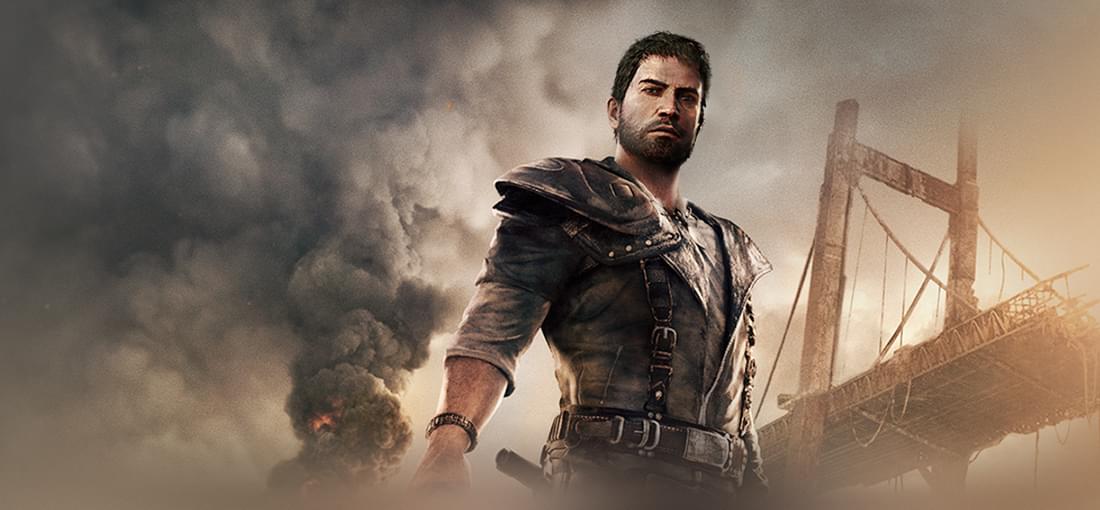
Mad Max, aka “Australia Simulator 2015”, is a good game and definitely a solid tie-in to the eponymous movie series. With its beautiful desert landscapes full of improbable cars and crazed barbarians, it absolutely nails the mood and aesthetics seen in the films. It can however be very bleak and depressing even by Mad Max standards, and the hero is much more gruff and unpleasant than usual. The controls, whether you’re driving a car or beating up hordes of warboys, are on the heavy and slightly clunky side of things, but the weighty feeling of your punches and vehicles only adds to the grounded and savage nature of the gameplay. It’s very satisfying to play and figures out the most important aspects of a Mad Max game: the survival in a harsh environment, the rebuilding of the world, the constant battle against savagery... and the vehicular combat. The multiple on-board weapons of your car indeed allow you to cause mayhem in many brutal ways, making for awesome high-speed battles, sometimes against entire convoys! Smartly enough, upgrading every part of your vehicle won’t make it that good, encouraging you to focus on either speed, armor and ramming damage to fit your playstyle. Still, Mad Max has flaws, most of which are typical of open world games. There’s a lot to do but not everything is equally fun, you’ll probably get sidetracked constantly, and the missions get repetitive: you drive somewhere, get into a fight, obtain a reward, use it to unlock upgrades, drive somewhere else, rinse and repeat. Also, enemies don’t respawn once you’ve cleared a zone, which sadly means you can not relive a satisfying combat. Overall, Mad Max is imperfect... But given the typical quality of movie-to-game adaptations, this one is definitely pretty great for what it is. It’s made with a clear love for the franchise and it manages to reproduce most of its appeal. Consider it a 4/5 if you just want a postapocalyptic game with brutal car-fu, and a 5/5 if you’re a fan of Mad Max.
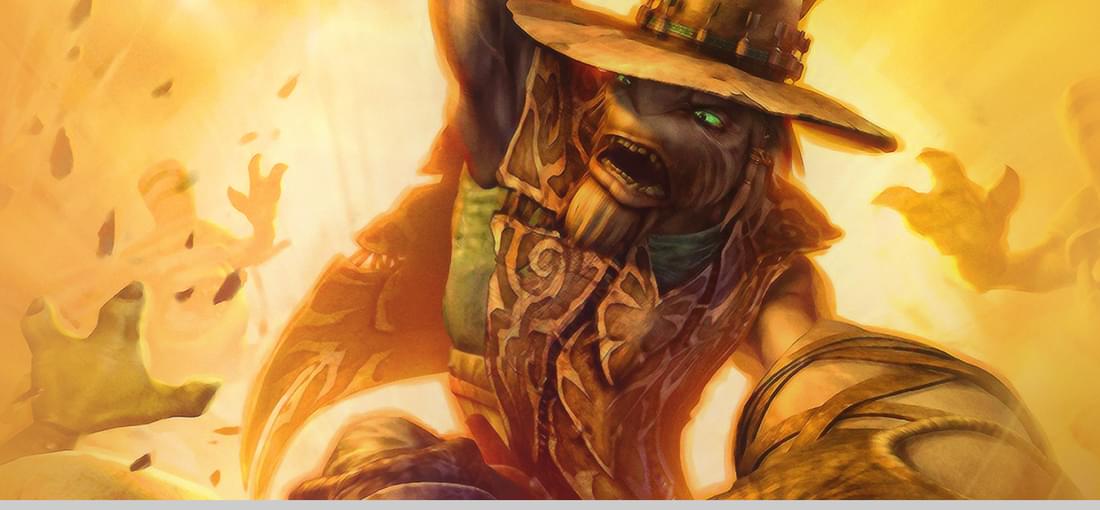
Set in the same world as Abe’s Odyssey, Stranger’s Wrath a testament to the creativity that prevailed in mid-2000s video games. You play as the kind of protagonist you’d want to see more often: the Stranger, a badass bounty-hunting cowboy monster with an attitude. The way this guy controls is certainly unique and puts a neat twist on typical combat-oriented games: making your way through enemy-controlled territories and dilapidated towns, you’re encouraged to make a smart use of a wide and strange variety of (living!) projectiles to approach situations cleverly, and preferably capture your enemies alive. As primarily an FPS game, it can feel slightly awkward to play: some projectiles are clumsy to use, the enemies tend to soak up too much damage, and there are few efficient ways to quickly get rid of them. However, as you get used to the gameplay, get weapon upgrades and get pushed into playing more lethally, the game becomes more enjoyable, and its design seems to get better and better along the way: its last third, notably, is very action-packed and satisfying. As with its predecessors, Stranger’s Wrath fully lives up to its “Oddworld” moniker and throws you in one of the most unique and atmospheric settings seen in a game, which to me remains its main appeal. It’s a mad cartoon full of weird creatures, strange technologies and beautiful landscapes which, while heavily reminiscent of the western, post-apocalyptic and cyberpunk genres, also looks and feel very different from anything you’ve seen before. It’s simply one of those worlds so vivid you wish you could visit more of it... and sadly, that has become increasingly rare since its release. This specific release of the Stranger’s Wrath is quite good, and adds cool HD models that do not betray the artistic style of the original version. It seems to have a few bugs, but nothing too bad. Definitely give it a try if you’re looking for an imperfect, but unique gem straight out of one of gaming’s golden ages!
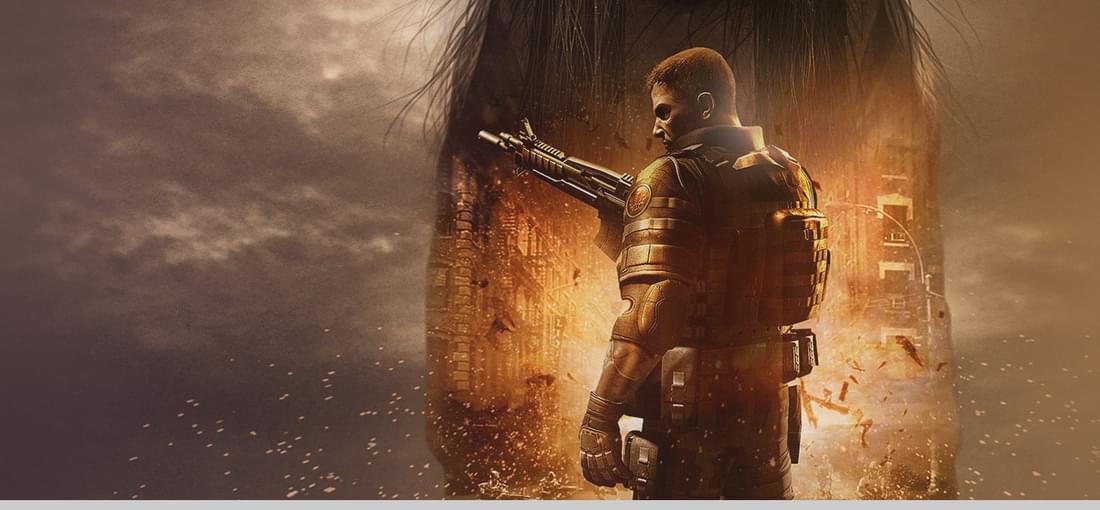
While 2005’s F.E.A.R. is reputedly one of the best shooters of its era due to its spooky atmosphere, great slow-mo mechanic and unrivaled A.I., this sequel is often forgotten or said to be disappointing. It indeed fails to truly improve on the formula of its predecessor… But is it really so terrible? The first issue is that it feels like a carbon copy of the first: the shooting mechanics, the slow-mo, the urban environments, the music, the jump scares... it’s the same thing all over again, with no risks taken. At least, since it lifts so many elements from its big brother, it definitely still feels like F.E.A.R.. All of the elements that made its success are still there, and as it was almost perfect in the first place, why fix what’s not broken? More aggravating is that on some levels, this feels like a downgrade, even if it was released 4 years after the first. You can’t lean around corners anymore, the guns tend to feel less impactful, the physics are less satisfying… And the enemy A.I. is still solid, but no more advanced than it used to be – in fact, the enemies seem more suicidal! Even the visuals are a let down: the graphics look only marginally better than in the original, while the lighting and particle effects are a lot less remarkable. It’s just not as stylish and impressive as its predecessor. But hey, nitpicks apart, it’s still tons of fun. Frankly, the gameplay mechanics are very functional, the level design is pretty good, and most of the new weapons are well-designed and satisfying, making for a lot of enjoyable gunfights. Also, you can take control of giant mechs, which is quite awesome. The campaign is well-paced and keeps getting better: it’s one of those games that save the best for last, and the expansion isn’t bad either! So while F.E.A.R. 2 is not as advanced as one might have hoped, it’s a very competent game and an okay sequel to a great shooter. I won’t replay it as often as the first game, but I see no real reason not to recommend it.
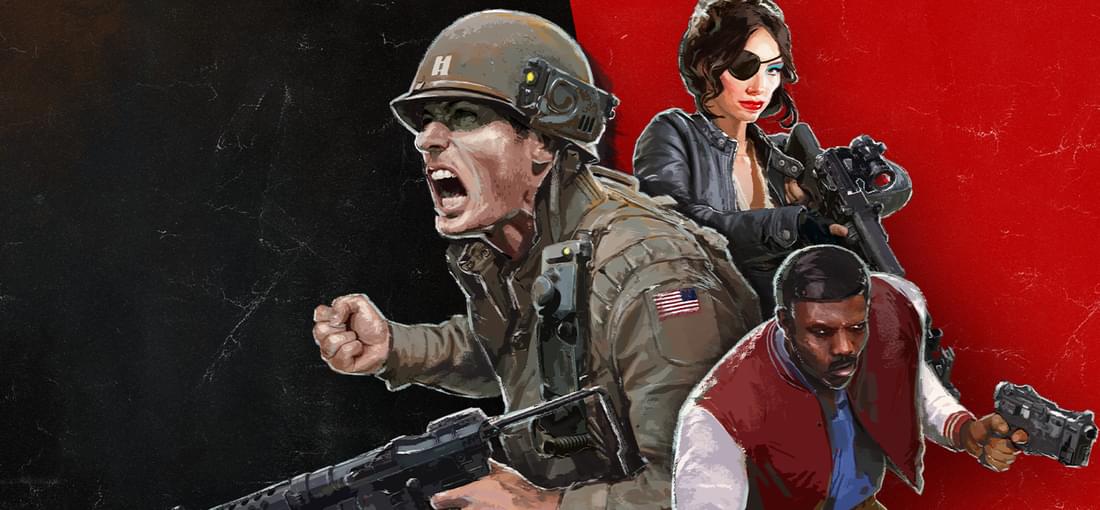
These DLCs, which are short in length, are basically map packs: a bunch of levels with no new gameplay mechanics, guns or enemy types in sight. Each one of these (short and pricey) expansions focuses on a new character, who plays pretty much exactly like B.J. does. Don’t expect any improvement on The New Colossus' game design: the gunplay is still good, but stealth remains difficult to pull off, and the path to take is often not as obvious as it should be. The levels also appear to be entirely made of recycled assets from the main campaign, which from the get-go is a bad sign. The storytelling makes extensive use of “motion comic” cinematics. The writing may feel kind of lazy and a bit cringy, but it emulates the style of pulp novels and old comic books pretty faithfully. As for the DLCs themselves... - Gunslinger Joe is uneven. It has some satisfying gunfights and a fun Panzerhund sequence, but the level design is pretty bland and the environments tend to have a sloppy, disjointed look. It’s definitely the most amateurish of the lot. - Agent Silent Death may be my favorite out of the three. It’s not great, notably because it forces you to look for hidden passageways to progress and barely gives you the means to fight heavily-armored enemies, but I enjoyed the assassination-based missions and found the stealth gameplay to be a bit better than it was in the main campaign. - Captain Wilkins is mostly fine. It’s forgettable, but embraces combat-based gameplay more than the two others and has a cohesive level design which allows for good gunfights and makes it clear where you need to go next. So overall, all three DLCs end up feeling like fan-made mods, and while they have fun moments, they owe most of their solidity to the fact that they have identical gameplay to the base game. In the end, this season pack is okay… ish, but the only reason you should ever buy this is if you really loved TNC and absolutely need more of the same in your life. Otherwise, skip it.
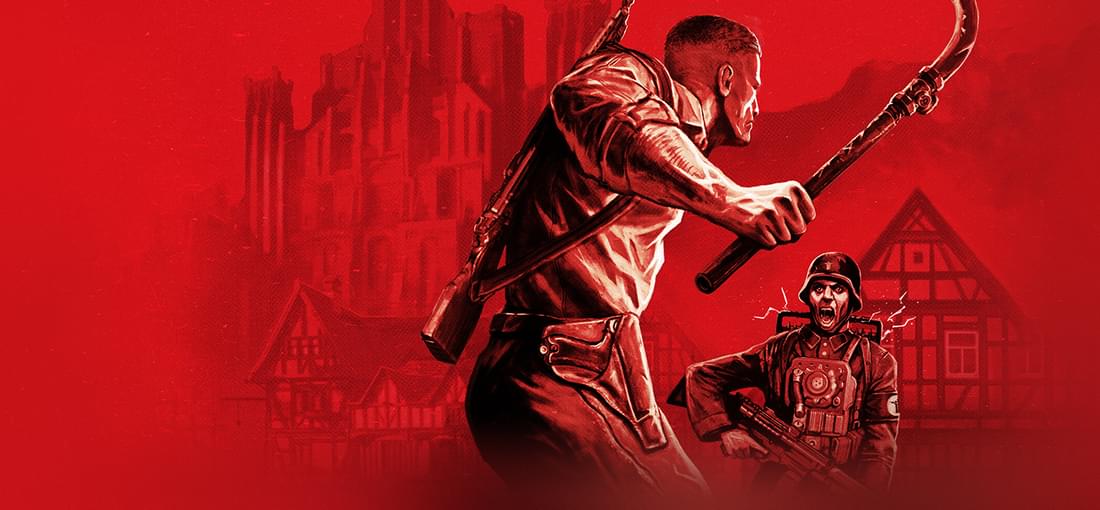
While it is somewhat overlooked, The Old Blood may be my favorite game of the new Wolfenstein saga. It simultaneously manages to reproduce the vibe of older entries, build up on the strengths of The New Order, and still bring a lot of novel elements on the table. The gunplay is similar to TNO’s, but improves on a bunch of things and solves some of its design issues. Heavily-armored enemies are not just annoying bullet sponges anymore, and go down quickly if you manage to target their weak point; overall, the way the new guns handle and how the fight areas are thought-out make combats a bit more enjoyable than they already were. The levels themselves are big, well-paced, and have you exploring a satisfying variety of environments, often seamlessly switching between gameplay types. The only things I have mixed feelings about are that the game still feels too much like a cover shooter, and strongly incites you to play stealthily - although sneaking up on commanders is still a lot of fun. Plot-wise, it’s a compelling trip through Nazi castles, small villages and forgotten ruins, relying heavily on occult themes and old-school horror imagery; if the dieselpunk world of The New Order didn't resonate with you, there’s probably something for you here. Cutscenes are used more conservatively, but their tone is still pretty bleak and not for the faintest of hearts. It’s worth noting that the structure and aesthetic of the campaign borrows heavily from 2002’s Return to Castle Wolfenstein, IMO the best game in the saga; in fact, it feels almost like a remake of its two first missions, with the story playing out in a fairly similar manner and echoing many of its most memorable scenes and levels. Perfectly fine with me. In short: the gameplay is great, the atmosphere and writing are solid, and it manages to distill the best of Wolfenstein into something that feels fresh and new. To me, this is one of the strongest entries in this series, and a game I gladly recommend.
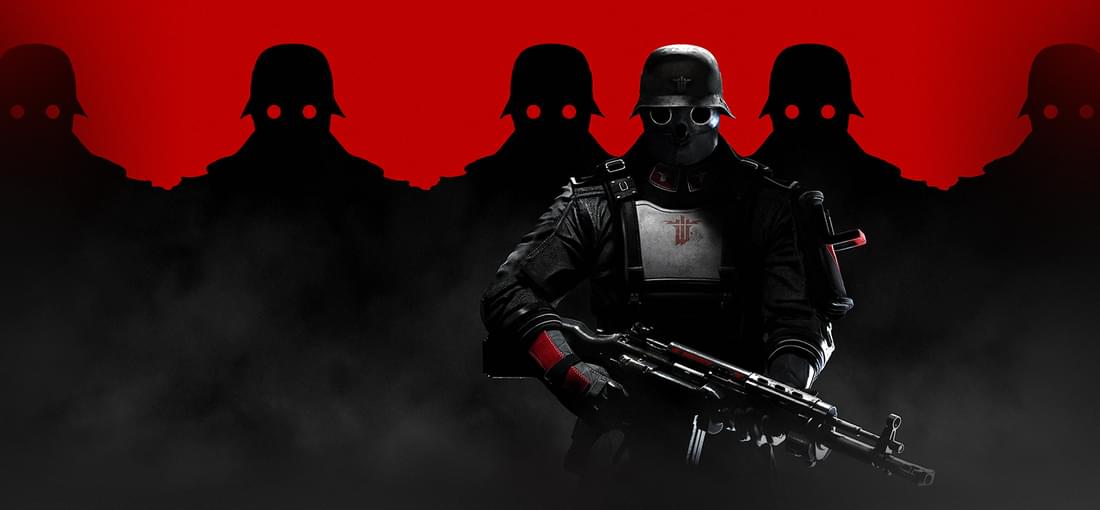
While I don’t have as much enthusiasm for The New Order as some people seem to, I still consider it a really good game, especially put in the context of its 2014 release. For starters, W:TNO has undeniable atmosphere. The graphics are good, the technology designs and set pieces are pure eye-candy… It takes its sweet time to build its world and characters, telling its story through cutscenes and playable sections devoid of combat, and ends up being very compelling as a result. Also, despite being a pulpy tale featuring alternate history, giant robots and eccentric characters, W:TNO has no qualms about putting the most horrifying aspects of the Nazi ideology on display, so brace yourself for some very crude scenes. The gunplay is very straightforward and satisfying. The awesome thing is that pretty much any weapon can be dual-wielded and handles like an anti-aircraft gun, tearing through walls and Nazis alike and unleashing chaos with each pull of the trigger! The stealth system is pretty simple, but it’s very functional and overall one of the most enjoyable I’ve seen in an FPS game – plus, it’s always an option and never forced upon you! However, I found TNO’s campaign to have a weird pace (it’s not uncommon to have long intervals between firefights), and uneven game design at times. The combat areas and enemy placement feel hit or miss: a few combat zones are just kind of empty and uninteresting, making for bland hostile encounters, and the game overrelies on bullet-spongy enemy types as a cheap way to amp up the challenge. It’s the type of game that makes you want to go all guns blazing, but instead mostly encourages you to cower behind cover. So yeah, W:TNO can be rough around the edges… But in both its gameplay and its storytelling, it’s a compelling, daring and uncompromising game, even more so considering that it was released in a time when this type of old school shooter was not in fashion anymore. Every FPS enthusiast out there should give it a try.
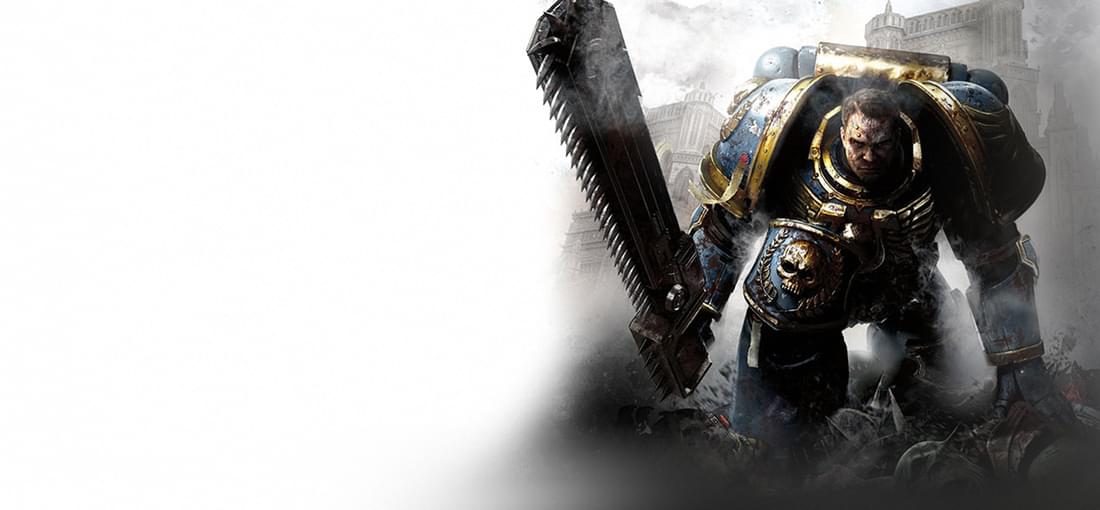
A decade ago, the world was not yet ready for WH40K:SM, and it received mixed reviews from critics: but experiencing it today, it truly feels like a hidden gem among shooting games. This game does an excellent job of emulating the sensation of power that would come from actually being a Space Marine. You can tell you character could lift a truck with one hand just by the way this guy moves, and each one of the guns you get to wield feels like it could take down an airliner with a few shots. Besides the great animations and effects, the gameplay itself is pretty solid: the movement is good, both ranged and hand-to-hand combat are efficient and feel great, and the enemy types are quite varied. Unlike most shooters of its era, the gunplay relies on staying aggressive and mobile rather than taking cover, and the health bar is non-regenerating. It’s pretty challenging, very chaotic, extremely hectic, and for the most part it absolutely rules. I don’t think it gets much love from the "boomer shooter" crowd, which is surprising considering its old-school design elements. It’s not a game you play for its story, but it has more than enough narrative substance to it. The writing and aesthetic seem pretty faithful to WH40K’s lore – in fact, you better be familiar with it, as very little effort is made to explain to newcomers what the universe and its factions are about. The visuals are solid for the time, the low-res textures being a necessary compromise for the gigantic environments and hordes of enemies on display. I take issue with a few things though. The level design is efficient but extremely basic and linear, and a lot of areas just feel empty. The difficulty also gets very steep from time to time due to hard-hitting, bullet-spongy enemies – the last few chapters are sure to cause some rage quitting. Alas, this release is pricey for a decade-old game, and does not include multiplayer modes or DLCs; but get it on sale and you’re in for a few hours of brutal fun!

Each of these expansions basically consists of a big new level, both of which can be finished in a matter of hours. Sadly, they don’t add new weapons or augs, but the core gameplay is still there : you’re allowed to go through levels and take out enemies the way you see fit and to make decisions that will matter later. System Rift is an aesthetic and thematic continuation of the main game, still taking place in Prague and involving corporate espionage. It apparently got mediocre reviews due to being “more of the same”, but it’s an okay addition if you liked the main campaign. While it’s fairly easy and doesn’t have much novelty to offer overall, the level design is good and follows the philosophy of the main game. I thought the hub zone you have to go through before infiltrating the building was reminiscent of the first Deus Ex’s levels, a good thing in my book. You get to see both new and familiar faces, and the storyline is good enough. It’s Deus Ex at its safest. It’s fine. A Criminal Past is definitely the best of the two. It revolves around a prison infiltration, a theme which isn’t that common in video games and falls perfectly in line with the Deus Ex setting. Not only does it look and feel different from what you’ve seen before, but the place itself can be explored in its entirety and is probably the most complex, detailed and credible environment seen in this game series. I found this expansion to be more challenging than anything else in the franchise: your access to augs is restricted, there aren’t that many supplies lying around… and while the constant barrage of security turrets and cameras makes sense for a prison setting, I quickly found it annoying to deal with. There are no easy solutions in A Criminal Past, so it will mostly be satisfying to play if you’re good at Deus Ex (which apparently I’m not). Overall, while not essential, these are pretty good additions, and I would recommend this Season Pass to anyone who enjoyed the main campaign.
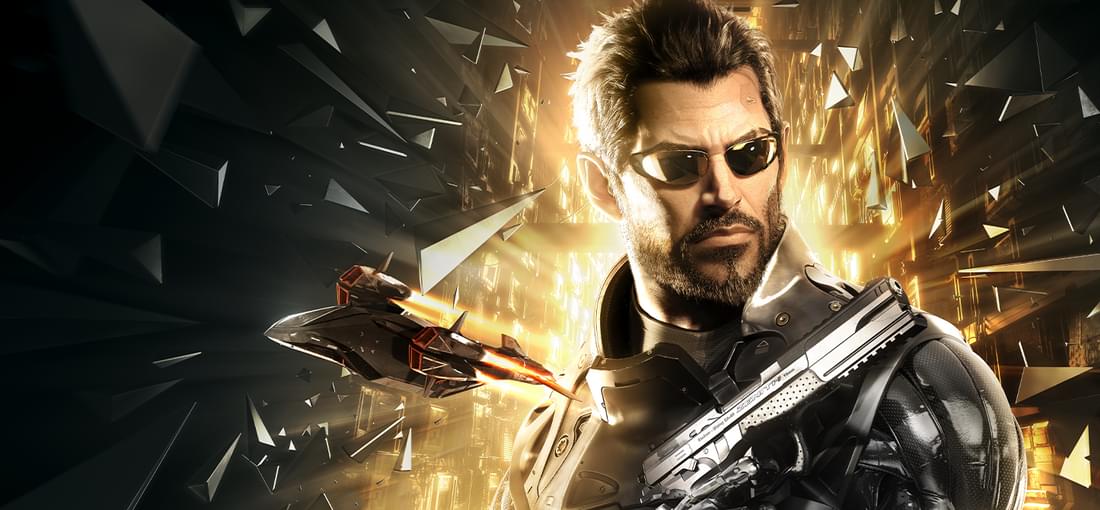
Released a few years after Human Revolution, Deus Ex: Mankind Divided improves it in many regards, and makes for a great experience overall. The gameplay is similar to HR for the most part. Alas, the XP system still tends to reward stealthy, hacking-based and non-lethal playstyles above anything else, but there are still quite a few welcome changes. They’re usually small details, like the slightly improved cover system, but they make both stealth and combat a lot more enjoyable. The new augs are also very cool. The level design is more complex and allows for more emergent gameplay: there are often plenty of different ways to infiltrate a given place and take out hostiles, and unlike HR, it usually takes more than a quick glance around a room to locate its secrets. Gameplay-wise, I definitely think this game is close to the original game in the way it expects you to think out of the box and try out different approaches to get to your objectives. I have mixed feelings on the story due to it having seemingly lower stakes than its predecessors: this time around you don’t really get to travel much or save the world, the anti-segregation subtext is pretty on-the-nose, and some plot threads remain unanswered. It’s clearly saving the cool stuff for a (yet-unreleased) sequel, and the ending of the game may leave you wanting for more. Still, the story is solid in itself, the conversations are superb, and DE:MD has IMO the best characters in the whole franchise – all in all, it’s a well-written game. The environments and character models look consistently gorgeous and are insanely detailed and varied. The aesthetic is more grounded and less high-tech this time around, which really gives MD a unique mood. However, the game may suffer from uneven performance and crashes on occasion - issues which really should have been patched out by now. Overall, it’s a great game and by far the best entry in the Deus Ex franchise since the first. Pick it up without second thoughts.